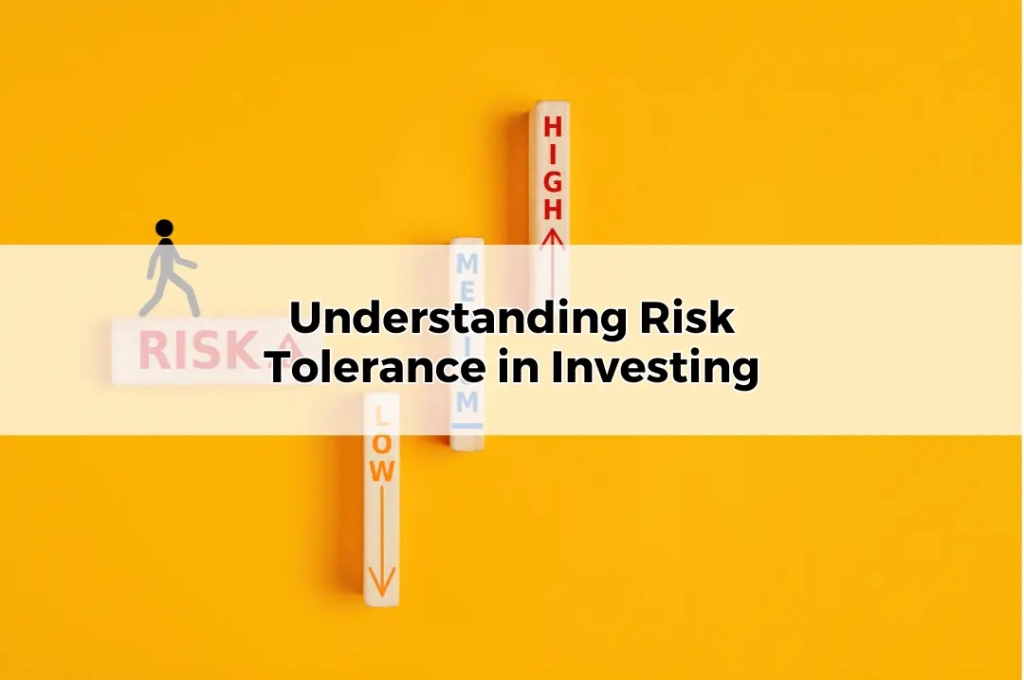Understanding Risk Tolerance in Investing
Table of Contents
ToggleRisk tolerance is a cornerstone concept in the realm of investing. It determines how much market volatility an investor can comfortably withstand without succumbing to anxiety. Properly understanding and assessing one’s risk tolerance is crucial for long-term investment success and financial stability.
Risk tolerance isn’t a one-size-fits-all attribute; it varies widely among individuals. It is shaped by various factors, including financial goals, time horizon, and personal comfort with market fluctuations. Grasping the essence of risk tolerance helps investors make informed decisions that align with their financial aspirations and peace of mind.
Defining Risk Tolerance
What is Risk Tolerance?
Risk tolerance refers to an investor’s ability and willingness to endure declines in the value of their investments. It’s a measure of how much risk an individual is willing to take on to achieve their financial goals. Understanding your risk tolerance involves recognising how you react to market volatility and potential losses.
Factors Influencing Risk Tolerance
Several factors influence risk tolerance, including age, income, investment goals, and personal financial situation. Younger investors might have higher risk tolerance due to a longer time horizon, while those nearing retirement may prefer stability and lower risk.
Assessing Personal Risk Tolerance
Risk Tolerance Questionnaires
One of the primary methods to assess risk tolerance is through questionnaires. These tools ask a series of questions designed to gauge your comfort level with various investment scenarios. They provide a quantitative measure of your risk tolerance, aiding in the creation of an appropriate investment strategy.
Psychological Aspects
Psychological factors play a significant role in risk tolerance. Personal experiences, temperament, and even cultural background can affect how comfortable you are with taking risks. Recognising these psychological elements is essential for accurately assessing your true risk tolerance.
Risk Capacity vs. Risk Tolerance
Differences Between Risk Capacity and Risk Tolerance
Risk capacity refers to the amount of risk you can afford to take, considering your financial situation. In contrast, risk tolerance is about how much risk you are willing to take. Both need to be aligned for a balanced investment approach.
Importance of Aligning Both
Aligning risk capacity with risk tolerance ensures that you are neither taking on too much risk nor being overly conservative. This balance helps in achieving your financial goals without causing undue stress or jeopardising your financial security.
Types of Investors Based on Risk Tolerance
Conservative Investors
Conservative investors prefer low-risk investments that provide steady, albeit smaller, returns. They prioritise capital preservation over high returns and are more likely to invest in bonds and money market funds.
Moderate Investors
Moderate investors seek a balance between risk and return. They are comfortable with a mix of shares and bonds, aiming for reasonable growth while managing risk.
Aggressive Investors
Aggressive investors are willing to take on higher risk for the potential of higher returns. They focus on shares, real estate, and other high-growth investments, accepting the possibility of significant fluctuations in value.
The Role of Time Horizon
Short-Term vs. Long-Term Investments
Your investment time horizon significantly impacts your risk tolerance. Short-term goals may require lower-risk investments to ensure funds are available when needed. Long-term goals can afford higher risk, as there’s more time to recover from market downturns.
Impact of Time Horizon on Risk Tolerance
A longer time horizon generally increases risk tolerance, allowing for a more aggressive investment strategy. Conversely, a shorter time horizon necessitates a conservative approach to preserve capital and meet imminent financial needs.
Diversification as a Risk Management Strategy
Benefits of Diversification
Diversification spreads investment risk across various assets, reducing the impact of poor performance in any single investment. It is a fundamental strategy for managing risk and stabilising returns.
Practical Diversification Techniques
Practical techniques for diversification include investing in a mix of asset classes (shares, bonds, real estate), geographic regions, and sectors. This approach helps mitigate risks and capitalises on opportunities across different markets.
Emotional Factors and Risk Perception
Behavioral Finance Insights
Behavioral finance explores how psychological factors influence investment decisions. Emotions like fear and greed can lead to irrational decisions, impacting your investment outcomes. Understanding these behaviors helps in managing emotional responses to market fluctuations.
Managing Emotions in Investing
Effective strategies for managing emotions in investing include setting clear goals, maintaining a long-term perspective, and avoiding knee-jerk reactions to market volatility. Staying disciplined and sticking to your investment plan are crucial for success.
Adjusting Risk Tolerance Over Time
Life Events and Risk Tolerance
Significant life events, such as marriage, having children, or retirement, can alter your risk tolerance. These events often bring changes in financial responsibilities and goals, necessitating a reassessment of your risk tolerance.
Periodic Reassessment of Risk Tolerance
Regularly reassessing your risk tolerance ensures that your investment strategy remains aligned with your current financial situation and goals. Periodic reviews help adapt to changing circumstances and market conditions.
Tools and Resources for Assessing Risk Tolerance
Online Tools and Calculators
Numerous online tools and calculators are available to help assess risk tolerance. These resources provide a convenient way to evaluate your comfort with risk and assist in shaping your investment strategy.
Consulting Financial Advisors
Financial advisors offer personalised insights into risk tolerance and investment strategies. Their expertise helps tailor your investment approach to your specific needs and goals, ensuring a well-rounded and informed strategy.
Risk Tolerance and Investment Strategies
Matching Investment Strategies to Risk Tolerance
Matching your investment strategy to your risk tolerance ensures that you are comfortable with your investment choices. Conservative strategies may focus on bonds and stable assets, while aggressive strategies might prioritise equities and growth assets.
Examples of Tailored Investment Portfolios
Examples of tailored investment portfolios include a conservative portfolio with a high allocation to bonds and a small percentage in equities, a balanced portfolio with an equal mix of shares and bonds, and an aggressive portfolio with a majority in shares and minimal bonds.
Understanding risk tolerance is vital for developing a successful investment strategy. It involves assessing personal comfort with risk, aligning risk capacity and tolerance, and adjusting strategies over time.
Accurately understanding and managing risk tolerance not only helps achieve financial goals but also provides peace of mind. It allows investors to navigate market volatility confidently, maintaining a balanced and resilient investment approach.









